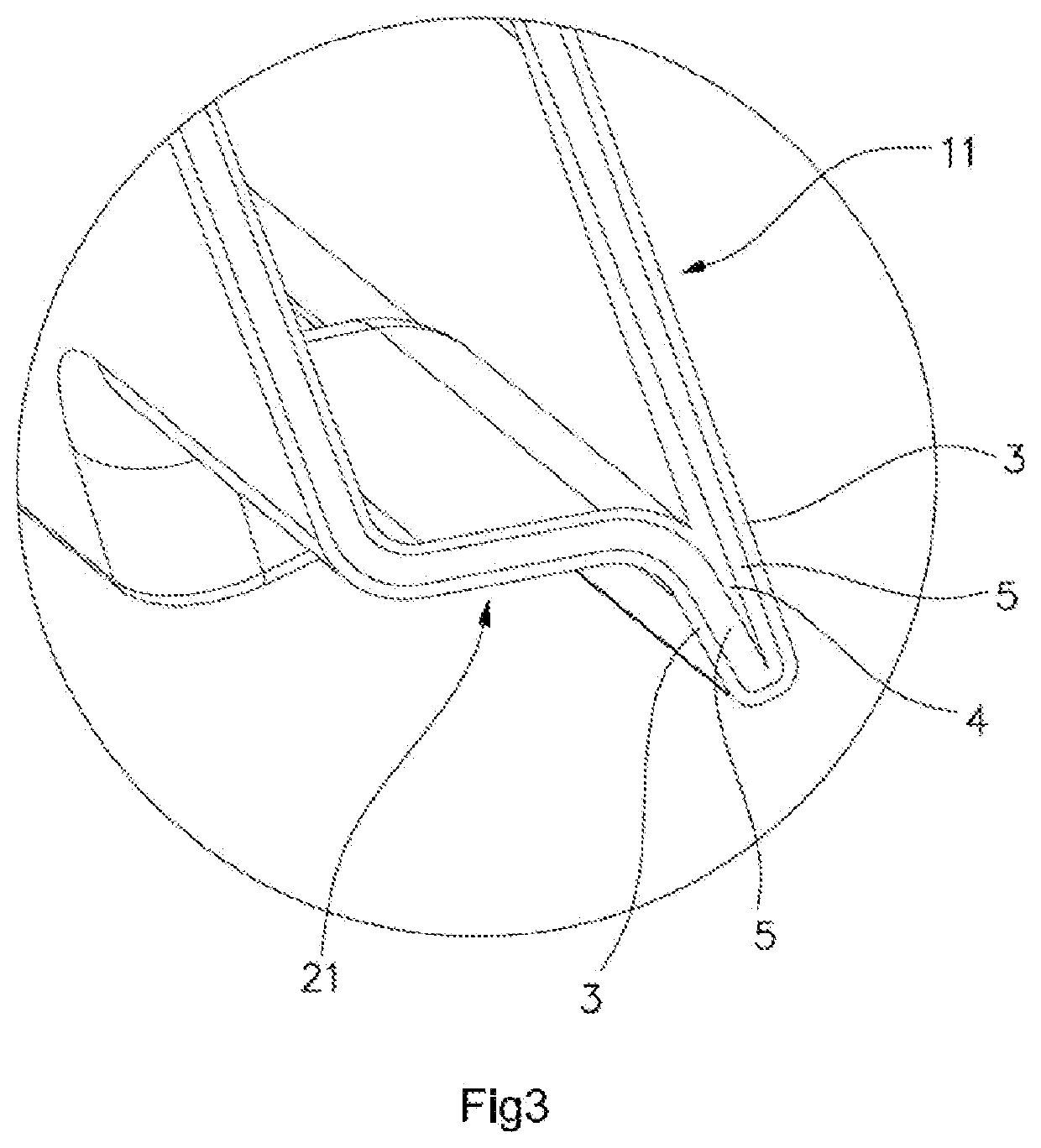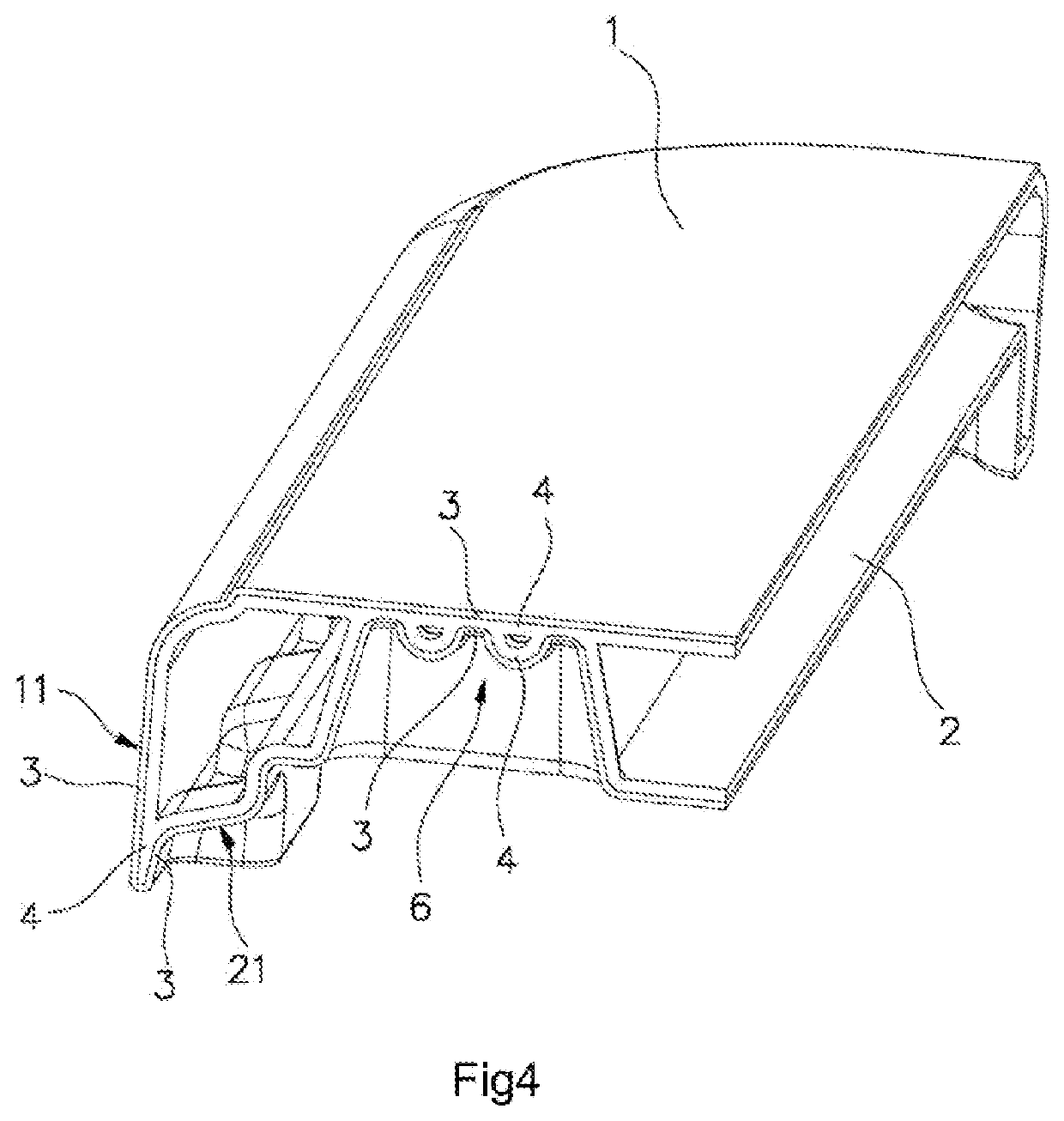Laminated Board and Application Thereof
a laminate board and laminate technology, applied in the field of laminate boards, can solve the problems of difficult to withstand a large weight, low strength, and the surface of the plastic panel tends to collapse, and achieves the effects of improving the strength, reducing the risk of slipping, and improving the scratch resistance and support strength
- Summary
- Abstract
- Description
- Claims
- Application Information
AI Technical Summary
Benefits of technology
Problems solved by technology
Method used
Image
Examples
embodiment 1
[0080]As shown in FIGS. 1-3, according to a first preferred embodiment of the present invention, the multi-layer laminated board according to the present embodiment comprises an upper panel member 1 and a lower panel member 2, wherein the upper panel member 1 and the lower panel member 2 form a hollow structure through a blow molding process.
[0081]Each of the upper panel member 1 and the lower panel member 2 of the present embodiment is a three-layer structure. That is each of the upper and lower panel members 1, 2 comprises an outer layer 3, an intermediate layer 5 and an inner layer 4, wherein the lower panel member 2 is recessed upwards, i.e., in the direction toward the upper panel member 1, until the inner layer 4 of the lower panel member and the inner layer 4 of the upper panel member 1 are fused and joined with each other to form a predetermined number of bonding support structures 6 distributed in a predetermined manner.
[0082]The edge structure of the blow-molded laminated ...
embodiment 2
[0099]As shown in FIG. 4, according to a second preferred embodiment of the present invention, each of the upper panel member 1 and the lower layer 2 of the present embodiment is a double-layer structure, which comprises an outer layer 3 and an inner layer 4. Besides, the lower panel member 2 is recessed in the direction toward the upper panel member 1 till the inner layer of the lower panel member and the inner layer of the upper panel member 1 are fused and joined with each other so as to form a predetermined number of bonding support structures 6 distributed in a predetermined manner.
[0100]The material structure of the double-layer blow-molded laminated board is as follows: each of the outer layers 3 of the upper panel member 1 and the lower panel member 2 is made of high density polyethylene, and each of the inner layers 4 of the upper panel member 1 and the lower panel member 2 is made of a mixture of high density polyethylene, metallocene polyethylene, and calcium carbonate or...
PUM
| Property | Measurement | Unit |
|---|---|---|
| Structure | aaaaa | aaaaa |
| Strength | aaaaa | aaaaa |
| Impact resistance | aaaaa | aaaaa |
Abstract
Description
Claims
Application Information
 Login to View More
Login to View More - R&D
- Intellectual Property
- Life Sciences
- Materials
- Tech Scout
- Unparalleled Data Quality
- Higher Quality Content
- 60% Fewer Hallucinations
Browse by: Latest US Patents, China's latest patents, Technical Efficacy Thesaurus, Application Domain, Technology Topic, Popular Technical Reports.
© 2025 PatSnap. All rights reserved.Legal|Privacy policy|Modern Slavery Act Transparency Statement|Sitemap|About US| Contact US: help@patsnap.com



